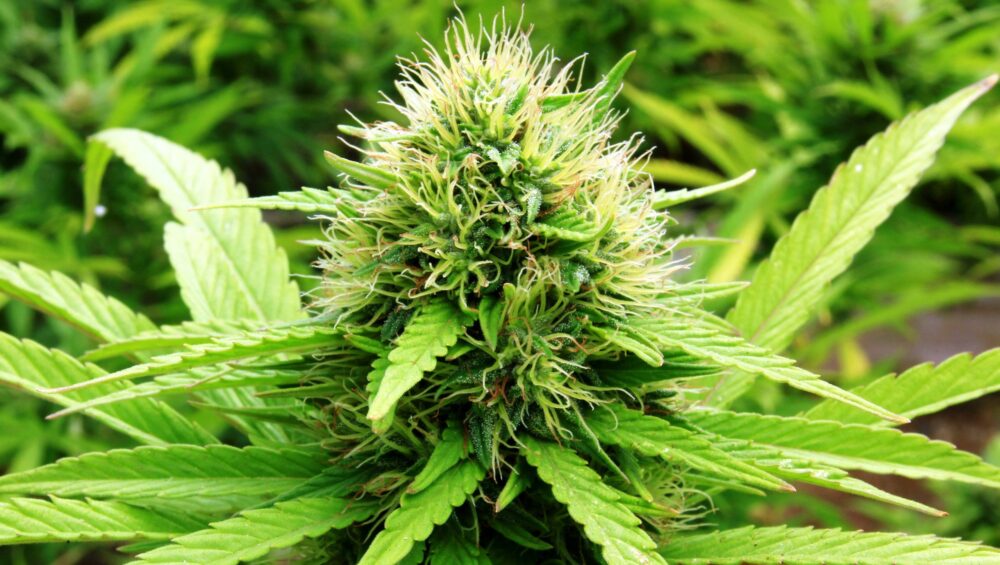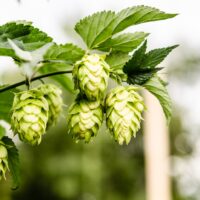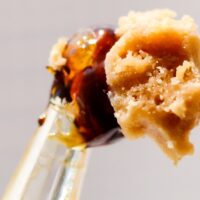[vc_row][vc_column][vc_single_image image=”26444″ img_size=”full” alignment=”center”][vc_column_text]Cannabis is a genetically complex plant that is made up of over 200 active compounds. From well-known cannabinoids (CBD and THC) to lesser-known components, such as cannabis flavonoids, this plant is a goldmine of information. However, despite flavonoids accounting for approximately 10% of the known cannabis compounds, they are not as widely researched or reported on. So, what are they?
What Are Cannabis Flavonoids?
Terpenes and cannabinoids that tend to steal the spotlight when it comes to cannabis, but flavonoids are another compound that are just as important to the genetic makeup of the plant – and have their own role to play.
While there are a few flavonoids that are specific to cannabis, these compounds can be found in various plants all throughout nature, from flowers to fruit and vegetables. In fact, there are over 6,000 different varieties of flavonoids! Much like terpenes cannabis flavonoids are responsible for how cannabis is perceived, including taste and smell – but it goes far beyond that.
Despite not having as much research as other cannabis compounds, there are a few things that we do know about these mysterious flavonoids.[/vc_column_text][/vc_column][/vc_row][vc_row content_placement=”middle”][vc_column width=”1/2″][vc_column_text]
Flavonoids Protect The Plant
One of the purposes of flavonoids is to help protect the plant.
These compounds are noted as having a partial responsibility when it comes to preventing pests and disease. In addition, flavonoids are even thought to protect the plant from harmful UV rays in some cases.[/vc_column_text][/vc_column][vc_column width=”1/2″][vc_single_image image=”26446″ img_size=”medium” alignment=”center”][/vc_column][/vc_row][vc_row content_placement=”middle”][vc_column width=”1/2″][vc_column_text]
Flavonoids Give Character
Flavonoids are an important component when it comes to the plants “character” (smell, visual appearance, flavor, etc).
Research shows that flavonoids affect the pigmentation of the flower, both in cannabis and other plants. In fact, the word itself comes from the Latin word “flavus”, which refers to the color yellow in nature.
In addition, flavonoids affect the pigmentation. For example, anthocyanins is a flavonoid that produces a deep purple color in cannabis strains such as GrandDaddy Purple. This flavonoid is also responsible for the red, purple and blue coloration in berries.[/vc_column_text][/vc_column][vc_column width=”1/2″][vc_single_image image=”26448″ img_size=”medium” alignment=”center”][/vc_column][/vc_row][vc_row content_placement=”middle”][vc_column width=”1/2″][vc_column_text]
Flavonoids Provide User Benefits
Beyond assisting with the physical and aromatic qualities of the cannabis plant – and helping to protect against outside elements, research has also shown that flavonoids can have particular benefits.
Much like cannabinoids, flavonoids are pharmacologically active and contain unique elements, which can be beneficial to the user depending on which compounds they encounter.
Some of the more well-known flavonoids include:[/vc_column_text][/vc_column][vc_column width=”1/2″][vc_single_image image=”26450″ img_size=”medium” alignment=”center”][/vc_column][/vc_row][vc_row][vc_column][vc_column_text]
- Quercetin – Found in many fruits and vegetables, as well as cannabis, quercetin has been found to have antifungal and antioxidant properties.
- Catechins – This is another antioxidant that provides cardiovascular benefits and is found in cocoa, tea and pome fruits.
- Cannaflavin A – This is a cannabis-specific flavonoid that is said to have anti-inflammatory properties stronger than those in Aspirin. This is similar to THC which has 20x the anti-inflammatory properties of Aspirin!
- Cannaflavin B – Also a cannabis-specific compound, but more research is being done.
- Cannaflavin C – Also a cannabis-specific compound, but more research is being done.
- Orientin – Found in cannabis as well as teas (specifically rooibos), orientin is a powerful antioxidant and free-radical scavenger. In fact, it is powerful enough to even reduce radiation damage!
- Silymarin – Another powerful flavonoid, Silymarin can help reduce damage from free radicals and battle cancer thanks to its powerful antioxidant and anti-inflammatory effects. It is commonly found in cannabis and milk thistle.
- Kaempferol – This flavonoid is found in a variety of plants (including cannabis) and has similar antioxidizing properties to help reduce oxidative stress and even reduce the risk of various cancers!
Many properties in cannabis are synergistic, meaning they work together. While CBD and THC can be potent on their own, studies continue to show that they perform best for pain-relief and healing disease when they are used together. This is similar when you consider the terpenes and flavonoids, which are also part of the cannabis makeup; the entire plant is designed to work as whole in order to produce the best effects.
While it is unclear how much effect flavonoids can have, and whether or not they enhance the properties of other cannabis compounds, it is apparent that these are powerful and beneficial compounds![/vc_column_text][/vc_column][/vc_row]






